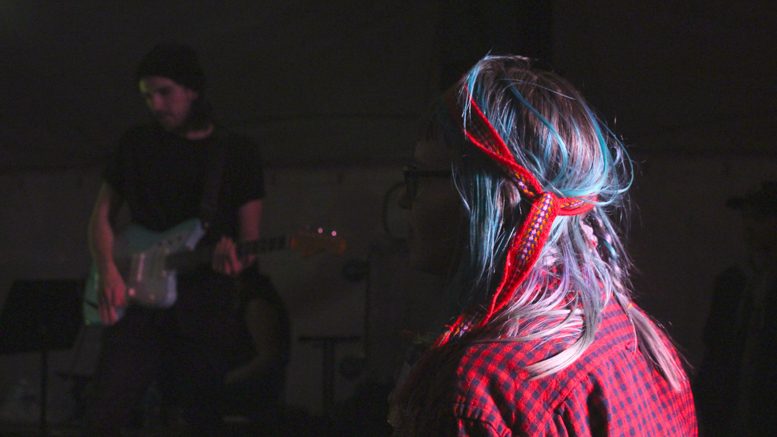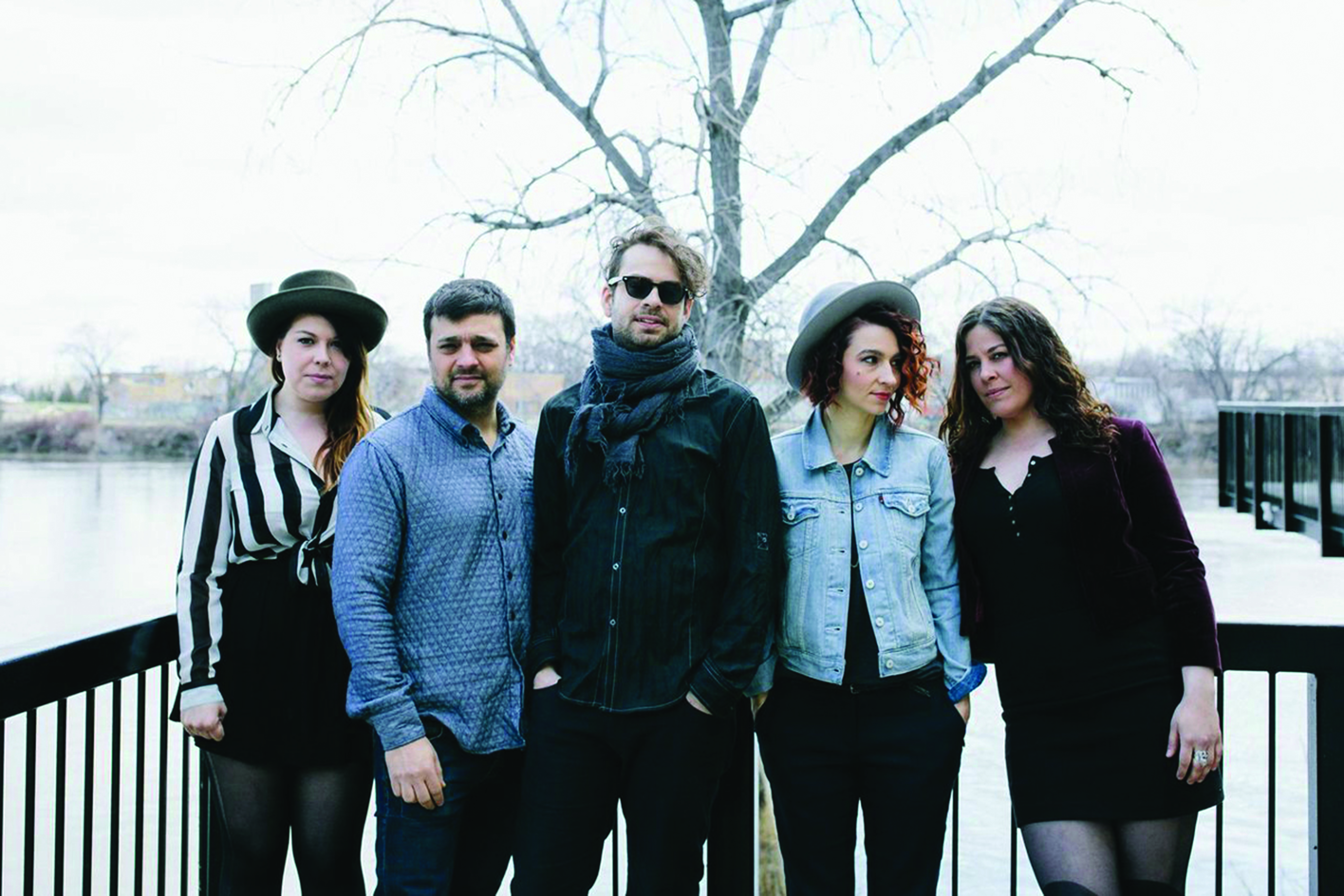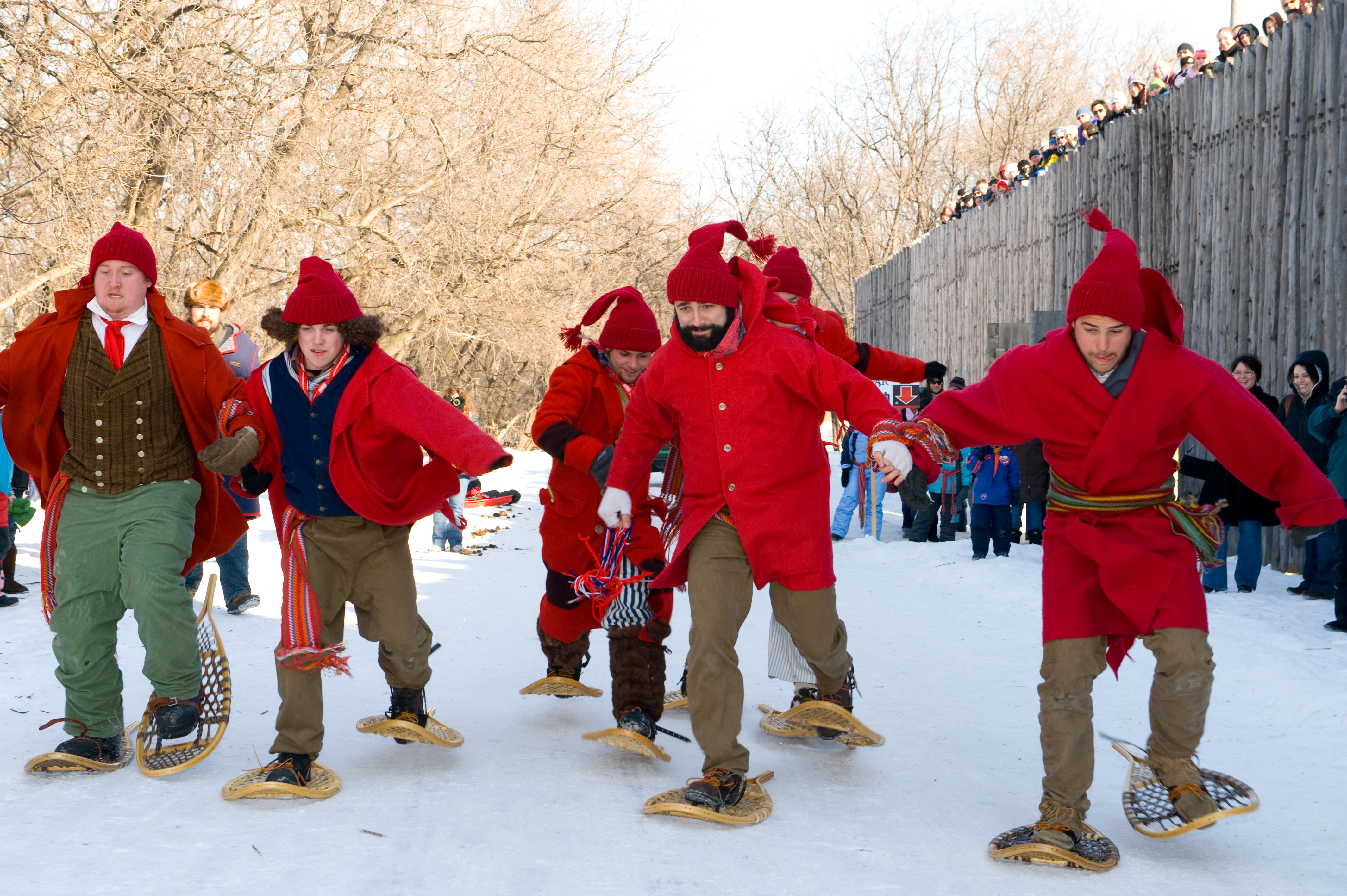Images of rain, melting snow, and slip and slide conditions are not usually associated with Winnipeg’s most beloved winter celebration, Festival du Voyageur. What was once a frozen winter wonderland with sculptures of intricate design have mushed into indecipherable heaps overnight that you can navigate carefully around through puddles and ice patches.
Though the weather that looms during this year’s edition of the festival is unlike the Winnipeg norm, the good vibes and high spirits associated with Festival du Voyageur assures that there will be good times within the many heated tents that feature some of Winnipeg’s best bands across several genres.
The downside of having such a mass of talent at a winter festival is that their performances are inside heated tents with limited capacity. The daytime performances are more or less geared towards families and children on school field trips. The bands that perform at this time play songs that are easy on the ears and laced with fiddlers, gigueurs, and sweet French harmonies. Though the evening bands are primarily English, there is a good chance you will be surprised by a French greeting or verse, if not a “hé ho” (festival lingo).
French performances continue into the night as fiddles can be heard above the sounds of hard bass and rock music that permeates the cold winter air. The spirit of the lively festival is captured with every show and band that performs, though they cut across different languages and genres.
The evening shows are near indescribable, as the atmosphere is unlike any other local festival. The warm tent lined with sweet-smelling wood chips that get stuck in your scarves and hair welcomes you in from the cold like a shot of Caribou. Colourful ceinture fléchées, French finger-woven belts, catch your eye as people from all cultures wear them around their waist, as is tradition, or around their heads like a badge of being a true voyageur.
The side of the tents and tables are lined with temporarily abandoned jackets, mittens, and scarves that have been deemed unnecessary due to the amount of imported heat and close quarters with your neighbours and newfound friends.
It is wise to grab a traditional drink at the bar before the bands begin. If you ask someone if they’ve had Caribou, you can tell if it’s their first Festival if they assume you’re speaking about the animal. Caribou is a traditional Quebecois beverage that was created in the 17th century. The drink, made of Caribou blood mixed with whiskey, is said to have kept the woodsman and loggers warm while trapping and hunting for the fur trade. The drink is now served with port or red wine, whiskey, and maple syrup, and if you’re lucky, you can try it at the ice bar where it is served in a beautifully crafted glass made of ice.
Traditional meals are served in the tents to fill your bellies and warm your bones like tourtière (meat pie), soupe au pois (pea soup), or the famous tire. Tire is a treat that’s made on the spot when warm maple syrup is carefully poured onto snow and rolled up on a popsicle stick. Patience while the syrup freezes is rewarded, as you’re left with a homemade lollipop that is so sweet you will have the energy to hop up and down, and side to side, to the sounds of the upcoming performances.
As you slide and shimmy your way towards the stage, you will undoubtedly be greeted in French at least a handful of times, a gesture that can be replied with a smile or similar greeting. One thing that is evident here is that everyone’s intention is a good time. After finally reaching the indoors, there is nothing but wide smiles all around.
The crowd creeps to the front as show time nears, and once the emcee introduces the band in both English and French, the audience is drawn to the stage like heavily-packed moths to a glowing flame. The lively performances provide the tempo for the group of gigueurs and swaying fans to party. The audience is at the mercy of the band performing, behaving in such a supportive and enthusiastic way that the energy of the tent is that of film or fantasy. The end of the night is when you must dig for your winter gear and perhaps have a Caribou for the road and face the cold, much like the 17th century voyageurs.
Over the years, the audience of Festival du Voyageur has grown considerably. The diversity of the musical line up has seen the festival develop from a small community event to one that attracts a large number of Canadian Anglophones and Francophones, with some coming in from the United States.
As the audience of Festival expands, Franco-Manitobans can showcase their lively, celebratory culture to more and more people. The festival is remarkable in that it has maintained its integrity while its popularity has skyrocketed. While some may disparage the influx of Anglophone bands, the diverse lineup takes nothing away from the celebration of French-Canadian culture; rather, it has become more accessible. Festival is still run and largely attended by Franco-Manitobans.
This year, the queues were incredibly long, and people had to be turned away at the gate after 7:30 p.m. on some nights. Although physical expansion could be a logistical nightmare for Festival, it would be amazing to see the site grow along with its audience – this way, there would be more room for dancing and tent-hopping without getting stuck in another hour-long queue.
Festival du Voyageur is an embodiment of the endurance of Winnipeggers and our ability to party even in terrible weather conditions . It showcases Franco-Manitoban culture and its ability to open its arms to the community in which it is a minority without assimilating itself. Until next year, hé ho!





